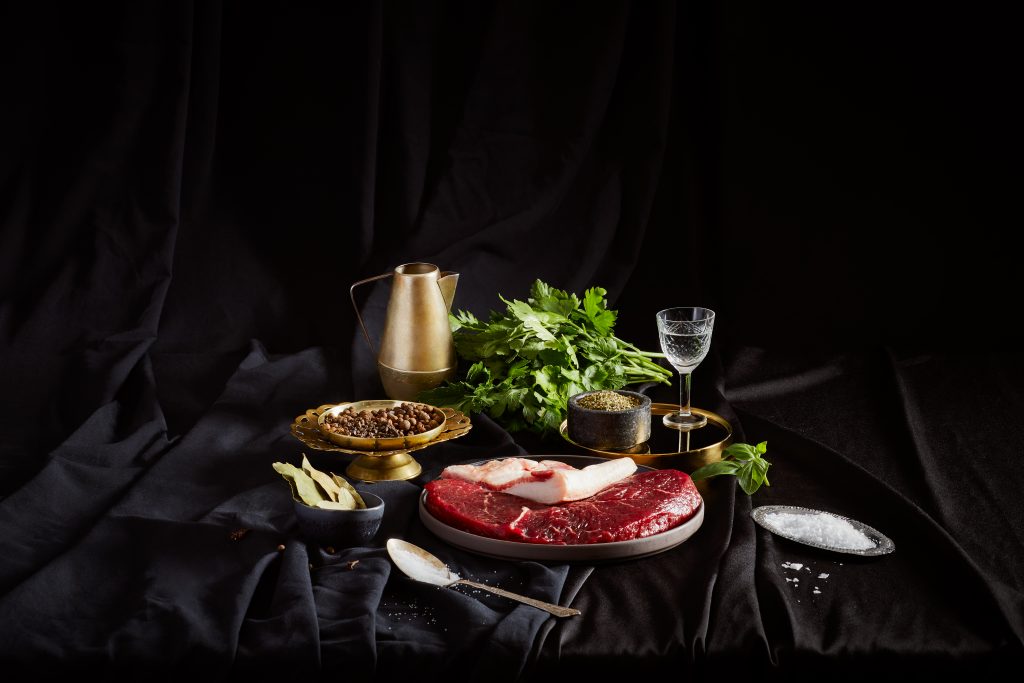The recipe for Lithuanian salceson reflects the strong seasonality of the traditional 19th-century manor farm – animals were slaughtered and their meat was salted, dried and smoked in winter – from Advent to Fat Tuesday – and the prepared products were eaten during Easter or in summer. This made it possible to preserve the meat for as long as possible without refrigerators.

The cooked meat brawn or thick dried sausages enjoyed by the nobility of the Grand Duchy of Lithuania were called salcesons. According to gastronomy historian Antanas Astrauskas, this word comes from the Italian word salsiccia or its derivative salsiccione, which comes from the Latin salsus (salty, salted). There are hundreds of traditional types of this kind of product in Italy. In Lithuania, there were two types – boiled and dried.
Boiled salcesons didn’t come directly to the Polish-Lithuanian Commonwealth’s haute cuisine from Italy, but rather from German cuisine, and were made from chopped pork offal with fresh salo that was boiled and steeped in broth for a long time. These salcesons were often a delicacy for the Easter table.
This information was shared by Antanas Astrauskas.
You will need:
- 6 kg deveined muscle (4 kg pork, 1200 g beef, 800 g venison)
- 200 g fresh fatback salo
- 200 ml vodka
- 26 g black pepper
- 13 g allspice
- 7 g cloves
- 7 g marjoram
- 7 g bay leaves
- 250 g salt
- 13 g potassium nitrate (E 249)
- Cleaned bull intestines
Method:
- Grind the spices (this can be done with a coffee grinder) and sift out any large pieces that are leftover.
- Chop all the meat into small pieces and pulverise it with a food processor, using the largest disc blade (don’t use a manual meat grinder, since you won’t get the right texture).
- Mix the meat thoroughly with the spices, salt, nitrate and vodka. Cube the salo as small as possible and stir it into the meat mixture.
- Divide the cleaned intestines into several sections. Holding the open end of the intestine with one hand, use the other hand to put small portions of the ground meat mixture inside. Gently squeeze the intestine to move the meat down, making sure that the intestine doesn’t tear and there are no air gaps between the portions of meat (you can speed up this process up by using a sausage stuffing machine). Tie both ends of the intestines with natural fibre kitchen twine.
- Attach narrow wooden boards to the prepared salcesons from both sides. Put the tied salcesons in a large oblong bowl and store in a cool room for two days. Then take them to a cold cellar or put them in a temperature-controlled household freezer (it is important that the temperature is not below freezing), cover them with a wide board, and load the board with stones. Increase the weight every few days by adding extra stones. The purpose of the weights is to flatten the salcesons. After two weeks, remove the weights and hang the salcesons vertically in a cold cellar for a few days to let them air out.
- After untying the boards, cold smoke the salcesons for two weeks.
- Hang the smoked salcesons to dry in a cool, dry place for two weeks or until you’re ready to eat them.
